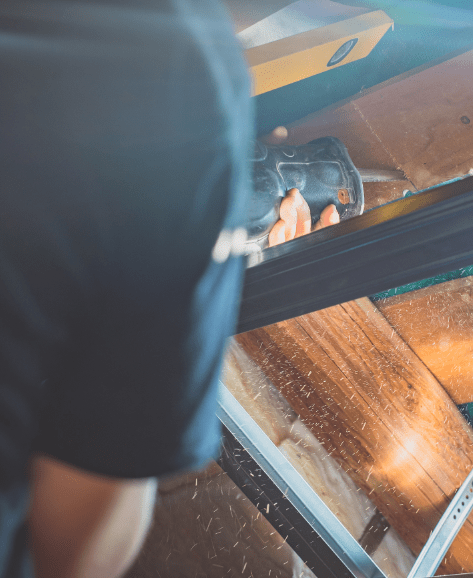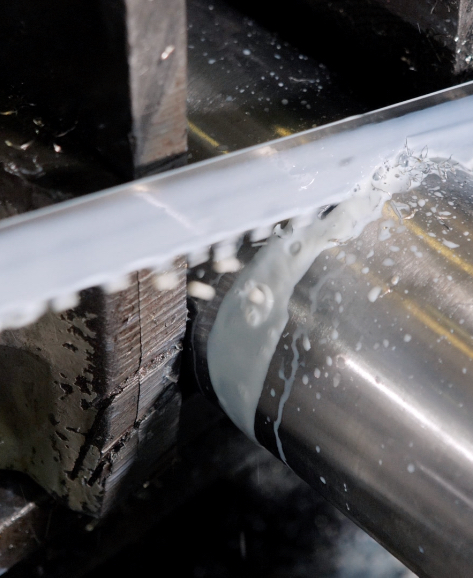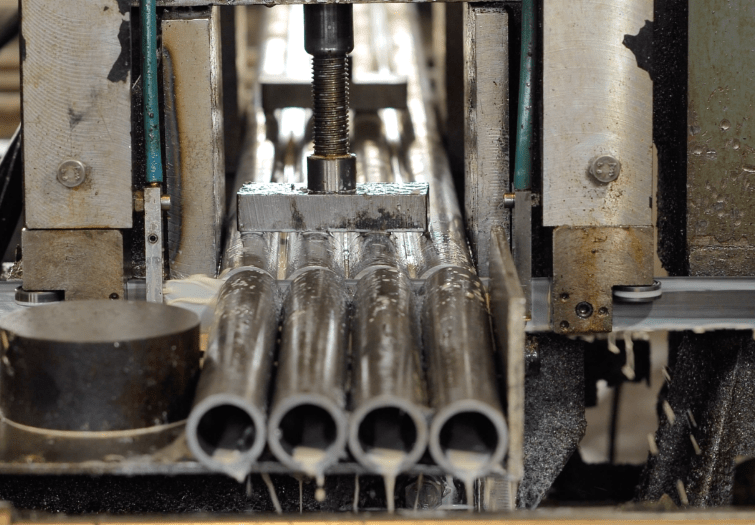Cutting metal can be a tricky task and the tools required for the job at hand can vary greatly based on the metal you are looking to cut, the quantity and the location of the job.
In this article, we've pulled together a few simple tips on how to cut metal, taking you through the various methods and metal cutting tools which can be used, before finishing up with some top tips.
Made to measure
As the old adage goes – measure twice, cut once. This is even more relevant when cutting metal. Of course, marking out is a vital part of the measurement process, with lines and shapes being transferred onto a material as a guide for the cutting. Accuracy is hugely important when it comes to ensuring materials will fit together as planned. For marking out using metals you might need an engineer’s blue, sharp scribe or felt marker. For measuring metals, a marking gauge, steel rule, engineer’s square or try square can come in handy.
So now we have covered the importance of measuring, let’s move on to the nuances of cutting various metals.

Hacksaws & Reciprocating saws
For simple jobs which do not require a high level of accuracy, or a lot of hard work, using a hacksaw to cut metal can make sense.
If you need a blade which works harder for you, a reciprocating saw can be the answer. Remember to keep the speed slow in order to save blade life. For thick metal, select a blade with around 8 teeth per inch (TPI), for metal of a medium thickness aim for 10 - 18 TPI, and for thin metal, 20 - 24 TPI is the most suitable.
Snips & Shears
When considering how to cut sheet metal, snips and shears work best. Note that sheet metal is characterised by its thinness. While Gilbow shears can cut all the way up to 1.2m, they can require a high work rate. You should also bear in mind that snips and shears can produce a slightly distorted edge which needs remedying once it is cut.
Angle Grinders
These handheld power tools are suitable for cutting jobs involving metal roof cladding or steel backsplash tiles. Angle grinders should be used with a good quality 1mm blade. Not only are they leaner and cut faster, but they also last longer. For complex cutting projects, you could use a rotary tool which has been fitted with a metal cutting disc. You could also use a Dremel for these kind of jobs, but be aware that they can wear down rapidly.

Circular saws
When you are using a circular saw for tasks such as cutting aluminium, brass, copper and lead, circular saws can be a good option.
Cutting sheet metal with a circular saw is very common. It is absolutely vital that you fit them with the correct blade, and that you take great care when operating the device - wearing appropriate PPE - because they can spit out hot chips. When it comes to cutting stainless steel with a circular saw, it is best to go slowly and use lots of coolant. Consider using either a carbide tooth or a steel tooth blade. Carbide tooth blades can last longer, although they would typically cost you more.
Oscillating Tools
Oscillating tools can be ideal for tasks such as cutting pipes or taking out corroded nuts. Fit them with a metal cutting blade, and they are a suitable tool when you are working in tight areas.
Jigsaws
Jigsaws are great for cutting mild steel and sheet metal. You should fit them with a good quality cutting blade, use lubricant, and go slowly. Always ensure your metal is adequately clamped before you begin, and keep vibration to a minimum by putting wood below. Remember that if your objective is to achieve a square hole in the middle of a piece of sheet metal, it is typically best to drill holes in the corners, cutting from there to the middle.
Orbital Tube Cutters
These self-explanatory tools come in a broad range of sizes, and are adapted to cut many different sizes of tubes and pipes.

Band saws
Band saws are ideal for cutting structural steel and bars. They vary significantly in type - with horizontal and vertical types available - according to the use required. Here at the Metal Store, we cut our lengths of metal using a horizontal band saw. Note that speed is important when operating a band saw. When using the tool stably you have the advantage of regulating the pressure very effectively.
Guillotine
Typically used for heavy duty tasks in industrial settings, guillotines can be ideal for regular use. Here at the Metal Store, we usually use our guillotine for the cutting of sheet metal.
Top metal cutting tips
Let’s finish the article with some essential tips for safe and effective metal cutting. Remember that cutting metal can spray small metal chips and shards, which can potentially cause injuries. For this reason, pay attention to the following advice:
- Always read the safety guidelines which are printed on blades and discs.
- Ensure that none of your skin is exposed, and that you are wearing adequate PPE.
- Always allow metal which has been cut time to cool before you touch it.
- Match the metal you are cutting to the right blade. As a general rule the softer a metal is, the smaller the teeth should be.
- Wear gloves when you are handling metal with sharp edges.
- Always stabilise metal with a clamp before you begin cutting.
- If you are cutting mild steel first, remember to change blade if you cut stainless steel afterwards, failure to do so could lead to the stainless steel rusting.
- Anyone else in your vicinity should also be wearing the necessary PPE.
Have a metal cutting project on the agenda? Why not let The Metal Store cut the metal for you? We offer the first 10 cuts for free, and we’ve got all the necessary equipment. Call us today on 01274 875 479.
